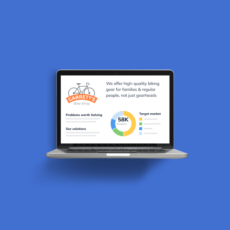Kody Wirth is a content writer and SEO specialist for Palo Alto Software—the creator's of Bplans and LivePlan. He has 3+ years experience covering small business topics and runs a part-time content writing service in his spare time.
How to Get an SBA Loan
3 min. read
Updated January 4, 2024
Founded in 1953, the U.S. Small Business Administration (SBA) has been a cornerstone of American entrepreneurship, helping businesses start, build, and grow.
As an independent agency, the SBA partners with public and private organizations to offer a range of services, including invaluable and accessible loan programs.
In this comprehensive guide to SBA loans, we’ll explore the different types of SBA loans, what lenders are looking for, and how to navigate the application process. We’ll also delve into resources around disaster loans, ensuring you’re prepared no matter what comes your way.
What is an SBA loan?
An SBA Loan is not a direct loan from the SBA itself. It’s a loan that has been made by a commercial lending partner (like a bank or credit union), but that the SBA has guaranteed for these partners and that has been structured according to SBA requirements. This helps to minimize the risk for both partners and borrowers. Typically, only those without reasonable access to other funding sources are eligible for such a loan.
Because loan guarantee requirements and practices are dependent on the US Government, changes to policies or economic conditions may change lending terms.
You can apply for an SBA Loan if you are part of a U.S. territory including the United States, Puerto Rico, Guam, and the U.S. Virgin Islands. If you are not part of any of these territories, there are a number of other funding opportunities available.
Introduction to the SBA loan program
Check out these resources to learn the basics about the types of SBA loans, what you can use them for, and how to apply.
SBA disaster loan resources
This, of course, is a category that business owners never hope to find themselves in. Unfortunately, circumstances are not always in our control or favor, and the time may come when you need a loan to rebuild your business after a disaster.
Check out our disaster loan resources to get to know this specific loan program.
SBA loan templates and tools
Resources to help you prepare to apply for an SBA loan and pitch to lenders.










